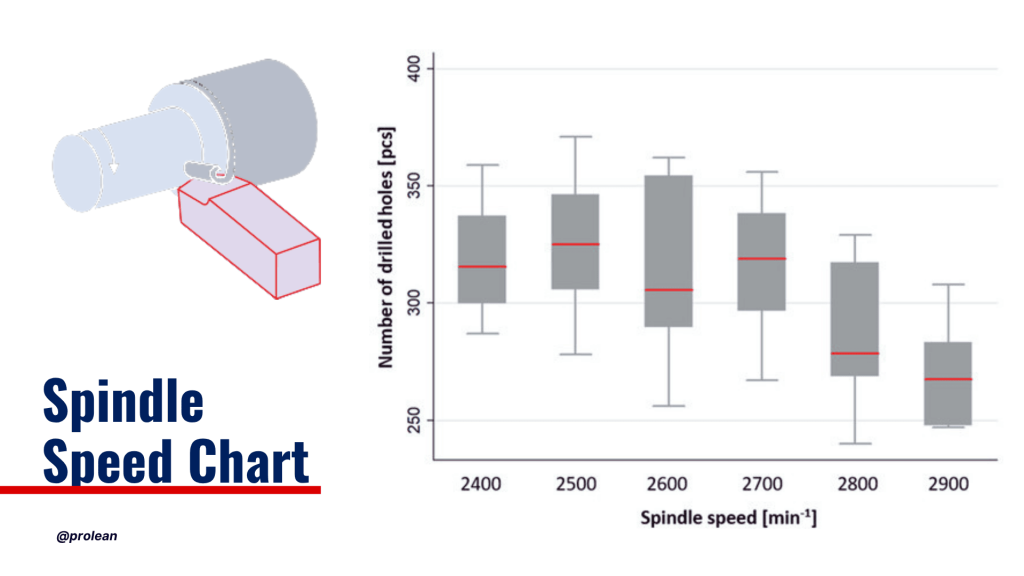
Spindle Speed Chart
On the shop floor, every decision changes your outcome. You work daily with speed, feed, and depth of cut.But one setting leads all the rest. That setting is spindle speed. It controls your tool wear and surface finish. If you miscalculate, you lose time and burn through tools.
This guide walks you through spindle speed in action. You will see how it works in real machining. You will also learn the formula, selection tips, and impact. Every point focuses on performance, savings, and better part quality.
What is Spindle Speed?
You have to use the spindle rotation speed in each cut you make. It is defined as the speed at which the tool rotates. In most cases, it is measured in revolutions per unit of time. This velocity not only influences movement. It modifies your finish, tool life, and chip control. Without the intended environment, you will likely harm your part or tool.
Spindle speed relates to the outcomes of your machining. When you dial it correctly, you get efficient outcomes. You maintain a constant process, and you retain your parts accurately.
Spindle Speed Vs. Cutting Speed
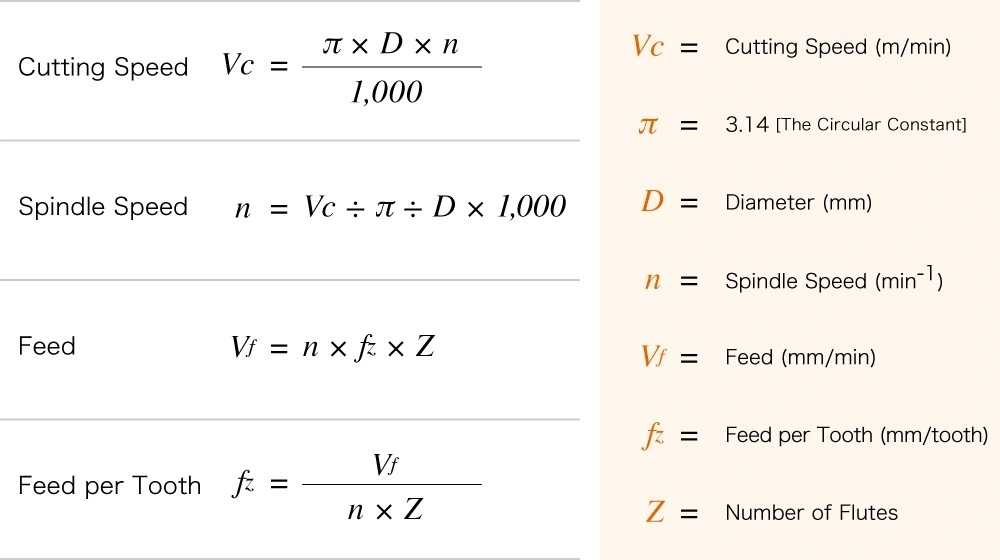
Formulas for Calculating Cutting, Spindle Speed, Feed Rate, and Feed per Tooth
Here we must dispel one of the on-the-shop-floor misunderstandings. You may frequently get the terms spindle speed and cutting speed coupled. However, these two are used interchangeably.
Spindle speed monitors the speed of your spindle. On the other hand, cutting speed is also known as surface speed or SFM (Surface Feet per Minute). It is the relative linear velocity between the cutting edge of the tool and the workpiece surface, not just the movement of the edge itself relative to the tool holder.. Both are relevant, but react to varying inputs.
Spindle speed is your choice. It depends on the tool’s size and the machine’s limit. Spindle speed charts use presets. It maintains your operations within safe performance limits.
The cutting speed, however, probes further into the nature of materials. It examines the interaction of the cutting tools on your part surface. It is dependent on heat, wear, and material type.
Control surface damage and heat by using the cutting speed. It aids you in maintaining your edge and retaining tolerances. In conclusion, one drives the machine, the other manages the cut.
Try Prolean Now!
What is the Role of Spindle Speed in Machining?
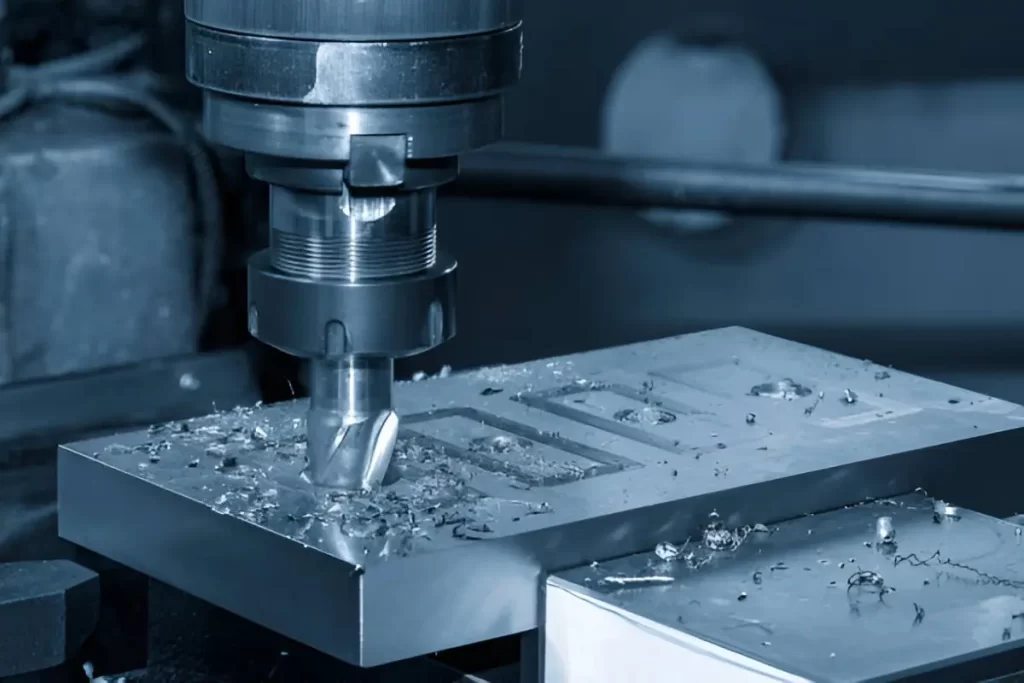
Spindle Chuck
In CNC machining processes, spindle speed is not something you can overlook in any cut. It correlates directly to your quality, cost, and performance. When you set it correctly, it enhances the whole working process. This bit is segmented in terms of where it matters the most. Spindle speed makes it all get down to finish and thermal control.
Surface Finish
The final pass should leave the surface smooth and clean. The result starts with the correct speed of the spindle.
As you advance the spindle speed, the cut is cleaner. The instrument travels more consistently throughout the piece. This way minimizes the tool marks, lines, and surface chatter.
The opposite happens when the spindle speeds are low. They cause hiccups and additional shakes. That is well enough to do when you are roughing, but not when you are finishing.
Spindle speed is not negotiable in high-precision parts. You require it quickly, steadily, and tailored to the content material.
Tool Life Optimization
You are already aware that tools are not immortal. Life expectancy depends on your spindle speed a lot of the time.
When the spindle rotates at an excessively high rate, the friction accumulates. You end up with heat, tool wear, and sudden tool breakdowns. It is expensive in terms of time, accuracy, and profit.
Slow spindle speed is also damaging to your tool during CNC machining. The tool starts to rub instead of slicing. That smearing blunts the edge and destroys performance.
Balanced spindle speed can resolve such issues. It maintains the tool cool, sharp, and cutting clean. Another factor to consider is spindle runout. Even a minor runout can worsen tool wear and reduce cutting efficiency.
Productivity and throughput
Time is of the essence on a machining shop floor. You will at least want to cut more stuff, quicker. That implies the need to increase throughput.
Spindle speed controls the rate at which you clear up the material. With higher speeds, there are reduced passes and a shorter cycle. This rate is essential for mass manufacture and lean machining. When you are in control of speed, you can save time.
Thermal Management
Machining effectively dissipates heat. It minimizes thermal buildup during the process. However, the majority of that heat is generated by the spindle. Friction and energy dissipation are produced at high spindle speeds. That energy is transformed into heat at the cutting edge. With time, it makes the tool weak and the material soft.
This should be done with care. Proper spindle speed keeps down heat accumulation. It adds to the protection of your part and tool, as well as coolants and lubricants.
How to Calculate Spindle Speed
There is no way you can forego the math before cutting. The spindle speed always begins with the material size and the tool. When you have those figures, you use a simple formula.
Spindle speed (N) is a rotational speed, measured in RPM. Cutting speed (Vc) is a linear velocity. The formula N = 1000 * Vc / (π * d) specifically links them, converting the cutting speed unit (m/min) to spindle speed (RPM) using the tool diameter (d in mm). With that, you calculate spindle speed based on your tool diameter. This will determine the rotations per minute that your spindle requires.
To take a brief example. Suppose you are cutting Mild Steel at 30 meters per minute. Your RPM is quick with a 20 millimeter tool. The formula for spindle speed will be;

Formula of Spindle Speed
Note: Calculate the spindle speed (RPM) based on the required cutting speed (Vc) in meters per minute and the tool diameter (d) in millimeters using the formula: N = 1000 * Vc / (π * d).
The method can be deployed in all job setups. It makes your process safe, accurate, and manageable.
Try Prolean Now!
Selecting the Right Spindle Speed
The selection of the correct spindle speed is not a guessing game. You must know your materials, tools, and operations. Each of those alters the proper speed setting.
Material Properties
In the shop, you are dealing with various materials daily. Some are butter cutters. Others retaliate.
Strong materials such as titanium restrict your speed. Get too fast, and you burn up or break your tools. In these cases, use low or medium-speed spindles.
The softer metals, such as aluminum, can be used faster. You may push them more quickly without damaging the edge. This brings you improved finish and quicker cycle times.
The best approach is to use a spindle speed table. These demonstrate average speed ranges by the type of material. Refer to them before any setup.
Properties of Cutting Tools
Your instrument is a massive factor in speed selection. Carbide tools will enable you to cut quicker and tougher. They can maintain their advantage even for hard materials.
The high-speed steel tools are more susceptible to friction. There is a need to slow down when using them. They do not perform too well at very high RPMs.
Coated tools add an advantage to you. TiN or TiAlN reduces heat and wear. This allows you to increase your spindle speed at a reduced risk.
Your limits are also dependent on the tool size and shape. Smaller tools should get more RPM to preserve cutting speed. In case of tool runout, lower the RPM to prevent breaking.
Machining Operation
The job itself changes your spindle needs. Not every cut allows high speeds. You need to match speed with intent.
Roughing cuts emphasize rapid material cutting. These do not adopt high speeds to safeguard your tool. Slow down in this area to reduce tool and personal injury.
Terminations require speed and stroke. To have smooth results, increase your RPM. This is a cleaner cut and leaves a finer finish.
Other simple cuts, such as facing or slotting, accept higher speeds. Reduce your spindle speed to be accurate and spare the tool.
Advanced Spindle Speed Techniques
Tuning the spindle speed is more than just picking one nice value, as machine tools get smarter, you must get smarter at speed control. You deal with more difficult components, stringent specifications, and shorter schedules.
Industrial machining no longer needs well-defined RPMs. You require real-time control and adaptive thinking.
VSS Variable Spindle Speeds
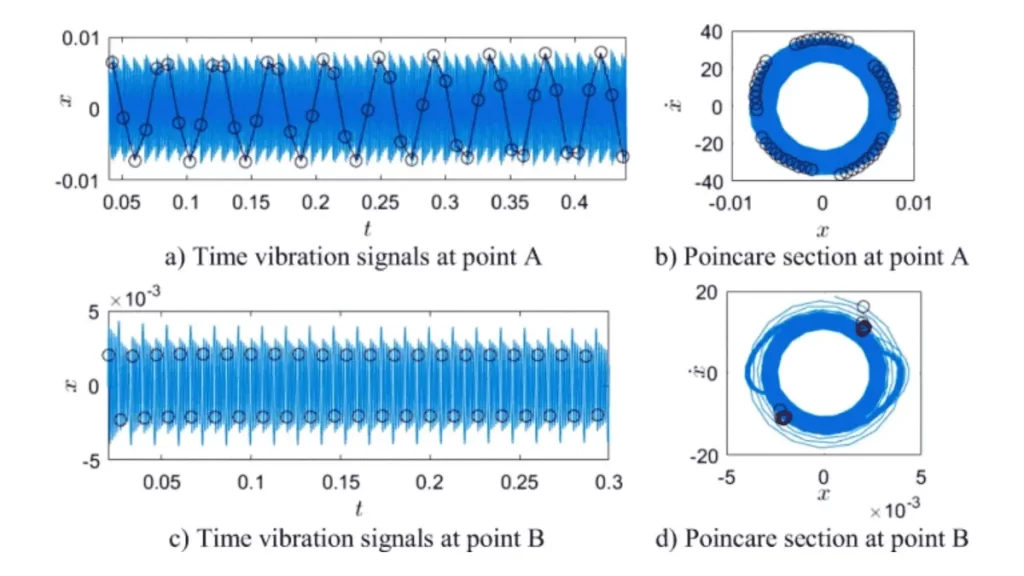
Graphical Representation of Variable Spindle Speed
You do not cut out one form or one substance; geometry changes. Materials do not behave the same way. And the level of tool engagement remains stable.
This is where the variable spindle speed takes a role. You do not lock into one speed, but instead change to match. As you cut, you move the RPMs around.
You can automate with CAD and CAM systems. Your CNC reads load and material zones and on-the-fly adjusts speed. This maintains the quality and safety of your tool.
You trim tool stress and obtain superior finishes. You also do not experience sudden breakage when cutting transition changes. It is more intelligent, sleek, and designed with intricate pieces.
High-Speed Machining
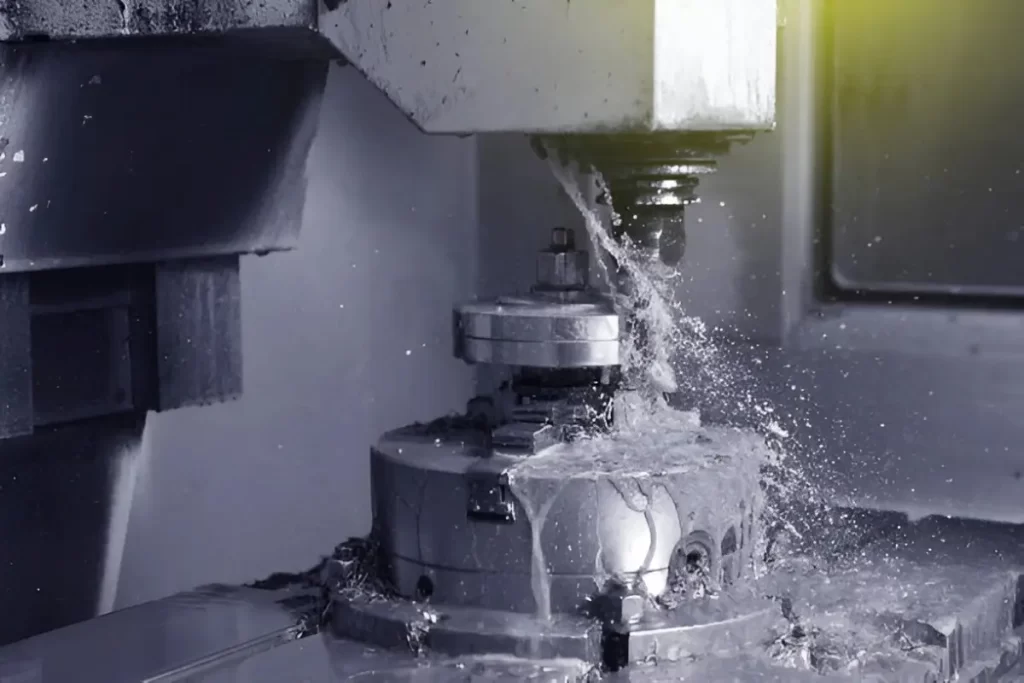
High Speed Machining
High-speed machining is not all about speeding. It implies operating above 15000 RPM. You want speed but not at any cost of control.
Here, carbide tools and stable spindles excel. They aid you in deleting things fast but in a precise manner.
In micromachining, you also apply high speeds. Speed is required when using instruments that are less than one millimeter. Go slowly, and the tool will not cut, but rub.
Under such conditions, high spindle speeds will provide you with neat edges. You obtain precise features without crushing your part or deforming it. it
Chatter Mitigation
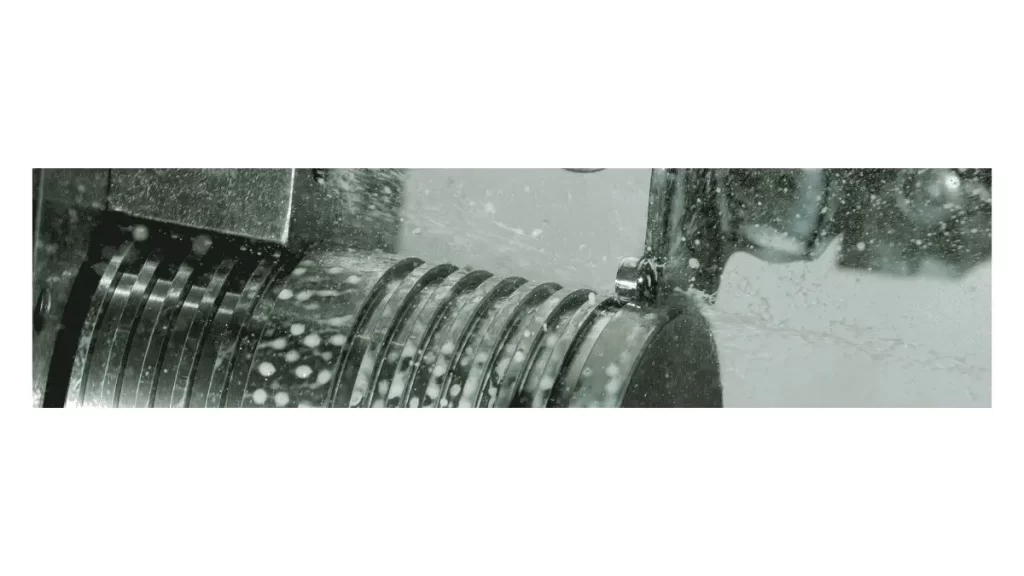
Chip Control During Machining
Chatter ruins your finish and your tools. It manifests itself in the form of noise, vibration, or irregular cuts. It can be prevented before it prevents your work.
Speed tuning of the spindle is one quick fix. You swap RPM or adjust it to evade the chatter area. This is effective as chatter is tool-dependent and based on the tools’ frequency. The vibration cycle is interrupted by a slight change in speed. It silences a cut and rescues a tool.
This method is most applied in intricate cuts or deep holes. In a single step, you save expensive rework and lengthen tool life.
High-Precision CNC Solutions with Prolean Tech
At Prolean Tech, you get more than custom CNC machining services. You get precision, speed, and control across every project. We fine-tune spindle speeds to boost your finish, tool life, and efficiency.
Our advanced machines and skilled engineers handle complex parts daily. Whether rapid prototyping or small-batch runs, we always deliver sharp results.
With high-speed spindles and complete process oversight, we help you easily hit tight tolerances. You save time, reduce waste, and get quality you can count on.
Choose Prolean Tech for your toughest machining challenges. We are built for precision and made for performance.
FAQ’s
Q1: What is the range of spindle speed?
You will see spindle speeds from five hundred to twenty thousand RPM. Some machines go even faster for special jobs. Your speed depends on your tool and workpiece.
Q2. How do you calculate spindle speed
You calculate spindle speed by dividing cutting speed by tool diameter. This formula helps you find the correct RPM. Constantly adjust based on your material and tool.
Q3. Why does spindle speed matter?
Spindle speed affects your surface finish and tool life. If you run too fast, heat builds and damages your tool. You risk part defects and tool breakage.
Q4. What is the recommended spindle speed for steel?
You start with nine hundred to fifteen hundred RPM for mild steel. Harder steel needs slower speeds to protect your tool. Always choose speed based on your tool size.

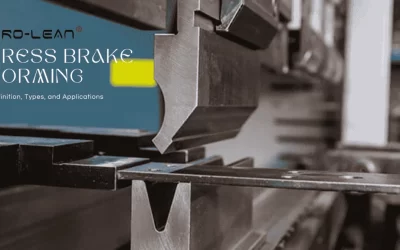
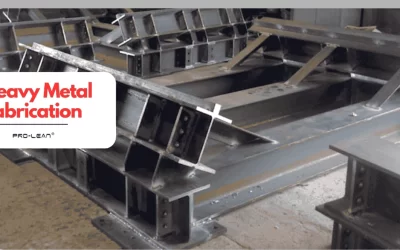
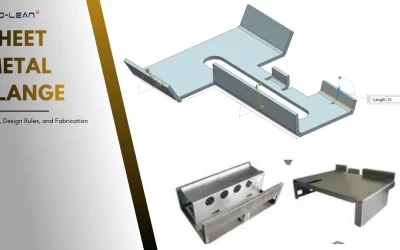
0 Comments